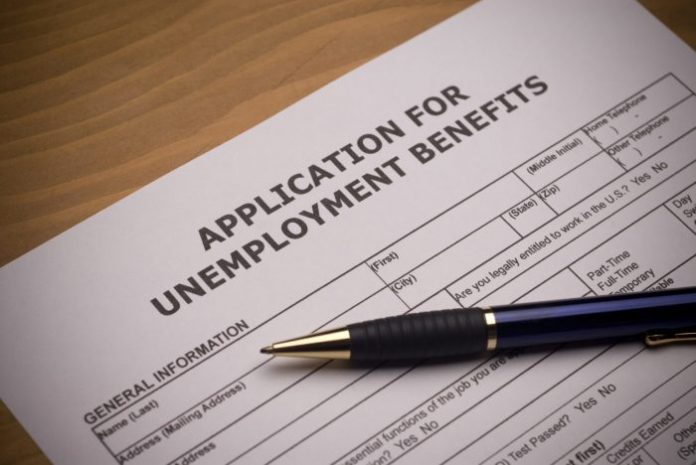ERIN MACEY , Indiana Capital Chronicle
Long before the tornado siren starts going off, you know a storm is coming. The clouds roll in, the air changes, and the sky darkens. The warning signs of an economic downturn have been rolling in, with revised national jobs numbers showing a steep decline in hiring and companies pledging to raise prices due to tariffs. Surviving this impending economic storm depends in part on the preparation that precedes its arrival, and Indiana has work to do to be ready.
When a person is laid off from a job, our unemployment insurance system is the primary mechanism that keeps families afloat. Unemployment insurance is funded through contributions from employers and serves individuals who experienced a job loss through no fault of their own. The intention is that in the event of an unexpected job loss, unemployment benefits will prevent families from falling into poverty.
Unemployment insurance in the state of Indiana provides individuals a maximum benefit of $390 per week, or roughly $1,600 per month. A recent analysis put the average benefit at $327/week in January 2024, or 32% of the average weekly wage for Indiana workers. In that report, all of our neighbor states had higher average benefits than us, with Kentucky ($498/week) and Ohio ($456/week) replacing closer to 50% of an average worker’s wages. Still, at any of these replacement rates, an unemployed person will struggle to meet their basic needs while they try to get another job.
In fact, Indiana’s maximum benefit falls below the poverty level for a family of two or more. Considering that fair market rent for a one-bedroom is over $1,000 in many locations in Indiana and that the average car payment is $521 (used) or $725 (new), Hoosiers will be hard-pressed to keep a roof over their heads and a working vehicle while they scour the job market. That leaves nothing for utilities, child care, health insurance, food, or other necessities.
The inability of unemployed workers to meet their basic needs doesn’t only affect Hoosiers who lose their jobs. There are landlords and mortgage lenders that won’t get paid, cars that will get repossessed, grocery stores that will see reduced spending, and medical bills that will pile up. Not being able to afford housing or transportation makes it harder for unemployed workers to secure and accept their next job offer because they don’t have a stable place to live or a reliable way to get to work. Failing to address the inadequacy of unemployment insurance benefits will have ripple effects that make it harder to rebound – especially at a time when many other supports are conditioned on meeting work requirements.
Beyond the family-sustaining purpose of these benefits, the unemployment insurance system is the doorway through which workers are connected to programs and tools that should propel their successful reentry into the workforce. With technology advancing rapidly and community needs constantly shifting, the jobs of yesterday are not necessarily going to be the jobs of tomorrow.
A robust unemployment system ensures that people can learn how the jobs landscape is changing and what skills they might need to secure high-wage jobs. It connects them to training opportunities and employment options. This connectivity becomes even more critical in turbulent times. A system with limited benefits that discourages participation also blocks access to these vital supports.
We can certainly debate whether a storm is coming and if we can control the weather. But we all share the goal of setting Hoosier workers, families, and businesses up to survive, and that means taking a hard look at our preparedness and making the appropriate adjustments.





